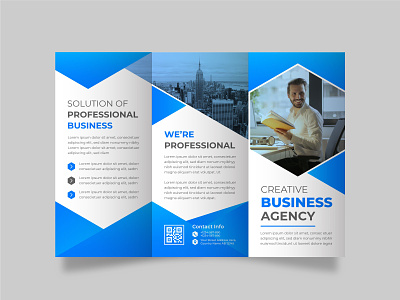
Brochure design is an art that can make or break your marketing strategy. In today’s competitive business world, a well-designed brochure can be the difference between grabbing your audience’s attention and being overlooked. In this comprehensive guide, we will explore the ins and outs of brochure design, from its importance to the nitty-gritty details.
Introduction
When it comes to promoting your business, a brochure is a versatile and effective tool. It provides a tangible and informative piece that can be handed out at events, trade shows, or simply displayed in your office. Let’s dive deep into the world of brochure design and discover how you can create a compelling marketing tool that leaves a lasting impression.
Why Brochure Design Matters
Brochure design plays a crucial role in marketing. It’s not just about throwing together some images and text; it’s about creating a visually appealing and informative piece that resonates with your audience.
Brochures help in:
-
Conveying Information: Brochures allow you to present a wealth of information in a compact form. You can provide details about your products, services, or upcoming events.
-
Branding: A well-designed brochure reinforces your brand’s identity. It should reflect your company’s colors, logo, and overall aesthetics.
-
Engagement: Engaging visuals and compelling content make readers want to explore further. This leads to more significant interaction with your brand.
-
Versatility: Brochures can be used in various marketing contexts, making them a versatile marketing tool.
Key Elements of Brochure Design
Creating an effective brochure requires careful planning and attention to detail. Here are the key elements you should consider:
-
Layout: The layout should be clean, organized, and easy to follow. Make use of grids and columns for a professional look.
-
Images and Graphics: High-quality images and graphics are essential. They should be relevant to your content and help convey your message.
-
Typography: Choose fonts that are easy to read. Mix different font styles for headings and body text to create visual interest.
-
Color Scheme: Select a color scheme that aligns with your brand. Use colors strategically to guide the reader’s eye.
-
Content: Your content should be clear, concise, and persuasive. Highlight benefits, features, and any unique selling points.
The Creative Process
Creating a brochure is a creative journey. Start by brainstorming ideas and concepts. Once you have a vision, begin the design process. Don’t be afraid to experiment with different layouts, color schemes, and typography. Solicit feedback from colleagues or friends to refine your design.
Brochure Design in the Digital Age
In today’s digital age, brochures are not limited to print. You can also create digital brochures, making them accessible on your website and easily shareable via email or social media.
Digital brochures offer interactivity, including clickable links and embedded multimedia elements. They provide an excellent opportunity to engage your audience and track their interactions.
FAQs
Q: What is the standard size for a brochure?
A: The most common sizes for brochures are 8.5″ x 11″ (letter size) and 11″ x 17″ (tabloid size). However, you can choose a size that suits your content and design.
Q: How do I choose the right paper for printing brochures?
A: The choice of paper depends on your budget and the desired finish. Common options include glossy, matte, and uncoated paper. A professional printer can help you make the best choice.
Q: What software can I use for designing brochures?
A: Popular design software for brochures includes Adobe InDesign, Illustrator, and Canva. Choose the one that best suits your skill level and needs.
Q: Is it necessary to hire a professional designer for brochure creation?
A: While it’s not mandatory, hiring a professional designer can significantly enhance the quality of your brochure. They have the expertise to create a visually appealing and effective design.
Q: How can I make my brochure more eco-friendly?
A: To make your brochure eco-friendly, use recycled paper, limit ink usage, and consider digital alternatives like e-brochures.
Q: What should I include in the call to action (CTA) of my brochure?
A: A good CTA should be clear, concise, and compelling. It should instruct the reader on the next steps, whether it’s visiting your website, contacting you, or making a purchase.
Conclusion
Brochure design is a critical aspect of your marketing strategy. A well-crafted brochure can engage your audience, convey your message effectively, and leave a lasting impression. By paying attention to the key elements of Brochure Design in Pakistan and exploring digital options, you can create a powerful marketing tool that sets your business apart.


